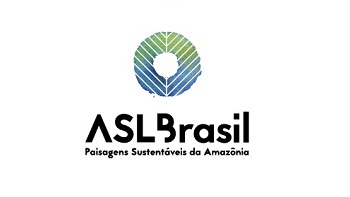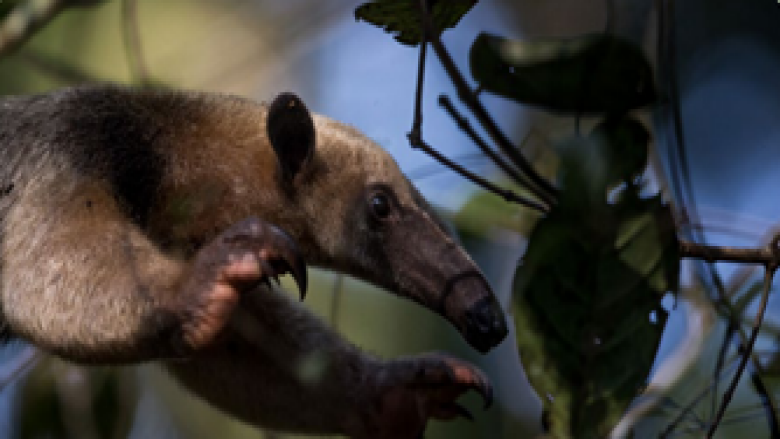ASL1 Projects
ASL1 Coordination Technical Assistance Project
GEF Agency: The World BankObjective: The regional technical assistance project aims to strengthen coordination, access to information, and capacity of national projects' stakeholders under the ASL Program. Within ASL1, this regional project is bringing the national teams of Brazil, Colombia, and Peru together to build capacity and scale up innovative approaches by offering knowledge exchange events, enhancing coordination with key partners, and building a community of practice.
Opportunities for regional collaboration and governance processes are also promoted with a wider community of project teams, government institutions, donor agencies, and civil society organizations working in the Amazon.
Brazil
Amazon Sustainable Landscapes Project
Executing Partners: Fundo Brasileiro de Biodiversidade (FUNBIO), Conservation International-Brazil (CI- Brazil), ICMBio, and the Ministry of Environment of Brazil
GEF Agency: The World Bank
Objective: To expand the area under legal protection and improve management of protected areas and increase the area under restoration and sustainable management in the Brazilian Amazon. For more information, please visit the project website and factsheet (in Portuguese).
Project Sites: Protected and productive landscapes i the nine Brazilian Amazon States (Acre, Amapá, Amazonas, Maranhão, Mato Grosso, Pará, Rondônia, Roraima, and Tocantins).
Colombia
Forest Conservation and Sustainability in the Heart of the Colombian Amazon
Executing Partners: Ministry of Environment and Sustainable Development of Colombia, Parques Nacionales Naturales, IDEAM, Instituto SINCHI, Corpoamazonia, CDA, Patrimonio Natural
GEF Agency: The World Bank
Objective: To improve governance and promote sustainable land-use activities to reduce deforestation and conserve biodiversity in the project area. For more information, please visit the project website (in Spanish), factsheet (in Spanish) and Story Map.
Project Sites: Serranía de Chiribiquete National Park (NP); Alto Fragua Indi Wasi NP; Paya NP; Serranía de Churumbelos Auka Wasi NP; Medicinal Plants Orito Ingi-Ande Flora Sanctuary; Corridor Páramos Miraflores/Picachos Regional Park, Bajo Caguan and Serranía La Lindosa, Capricho, Cerritos and Mirolindo; 22 indigenous reserves.
Connectivity and Biodiversity Conservation in the Colombian Amazon – Sustainable Amazon for Peace
Executing Partner: Ministry of Environment and Sustainable Development of Colombia
GEF Agency: United Nations Development Programme (UNDP)
Objective: To improve connectivity and conserve biodiversity through the strengthening of institutions and local organizations to ensure integral low‐carbon emission management and peace building. For more information, please visit the project website (in Spanish) and factsheet (in Spanish).
Project Sites: Climate Change Management Strategy and Integrated Climate Change Plans developed for the Amazon region; two focalized areas for landscape design: Sabanas del Yarí (Caquetá – Meta) and La Perla Amazónica Campesino Reserve Zone (Putumayo); two focalized areas for strengthening conservation and sustainable, inclusive value chains: Piamonte (Cauca) and La Uribe (Meta).
Peru
Sustainable Productive Landscapes in the Peruvian Amazon
Executing Partner: Ministry of Environment of Peru
GEF Agency: United Nations Development Programme (UNDP)
Objective: To generate multiple global environmental benefits through the application of an integrated approach to the management of Amazonian landscapes. For more information, please visit the project website and factsheet (in Spanish).
Project Sites: The project will benefit protected areas in 11 districts located in the regions of Ucayali and Huánuco.
Securing the Future of Peru’s Natural Protected Areas
Executing Partners: National Service of Natural Protected Areas (
SERNANP),
Ministry of Environment of Peru, Peruvian Trust Fund for National Parks and Protected Areas (
PROFONANPE)
GEF Agency: WWF
Objective: To promote long-term financial sustainability for the effective management of the National System of Natural Protected Areas of Peru (SINANPE) for the protection of globally important biodiversity and ecosystem services in the Amazon Biome. For more information, please visit the project website (in Spanish), factsheet (in Spanish) and Story Map.
Project Sites: The project will benefit the protected areas system that includes 38 protected areas in the Amazon forest. On-the-ground interventions will be supported in four prioritized protected areas (Río Abiseo National Park, Tingo María National Park, Tabaconas Namballe National Sanctuary and the Machiguenga Communal Reserve).
ASL 2 Projects
ASL2 Amazon Regional Technical Assistance
GEF Agency: The World Bank
Objective: The project aims to facilitate the exchange of knowledge and experiences between the national ASL projects and with other key stakeholders. It aims to strengthen coordination, access to information, and capacity of national projects stakeholders under the GEF-7 Amazon Sustainable Landscapes Program.
Bolivia
Amazon Sustainable Landscape approach in the National System of Protected Areas and Strategic Ecosystems of Bolivia
Executing Partner: Ministerio de Medio Ambiente y Agua
GEF Agency: CAF
Objective: Strengthening the management effectiveness and financial sustainability of SNAP and strategic ecosystems, based on social participation and on the sustainable production of natural resources, focusing on the Bolivian Amazon. For more information, please read the project factsheet (in Spanish).
Project Sites: Madidi Integrated Management Natural Area and National Park, Noel Kempff Mercado National Park, Beni Biological Station Biosphere Reserve, Manuripi Amazon National Wildlife Reserve, Isiboro Sécure Indigenous Territory and National Park, Pilón Lajas Biosphere Reserve and Communal Lands, subnational protected area Bruno Racua Wildlife Reserve, Río Yata Ramsar site, Río Matos Ramsar site, Río Blanco Ramsar site, and the Center of Indigenous Peoples of the Pando Amazon (CIPOAP) territories.
Brazil
Amazon Sustainable Landscapes (ASL2)
Executing Partners: FGV, Ministry of Environment of Brazil
GEF Agency: The World Bank Group
Objective: To expand the area under legal protection and improve management of PAs and increase the area under restoration and sustainable management in the Brazilian Amazon. For more information, please read the project factsheet (in Portuguese).
Project Sites: Protected areas, rural properties, and public lands in four Brazilian Amazon States (Acre, Amazonas, Pará, Rondônia), including the Central Amazon Biosphere Reserve, Baixo Rio Negro Mosaic of Conservation Units, Rio Negro Natural Heritage Site, Rio Negro, and the Rio Juruá Ramsar Sites.
Colombia
Forest Conservation and Sustainability in the Heart of the Colombian Amazon (ASL2)
Objective: To improve governance and promote sustainable land use activities in order to reduce deforestation and conserve biodiversity in the project area.
Project Sites: Protected areas (14): PNN Serranía del Chiribiquete (PNNSCH), PNN La Paya, PNN Serranía de los Churumbelos - Auka Wasi (PNNSCHAW), PNN Alto Fragua Indiwasi (PNNAFIW), Medicinal Plants Orito Ingi-Ande Flora Sanctuary, PNN Sierra de la Macarena, PNN Tinigua, PNN Picachos, National Natural Reserve Nukak (RNN Nukak), National Protected Forest Reserve (RFPN) Serranía de la Lindosa, RFPN Alto Mocoa Basin and overlapping indigenous reserves, RFPN Alto San Juan Basin and Páramo Miraflores – Picachos, and the Bajo Guayabero Land Conservation District.
Ramsar sites: Lagos de Tarapoto and Estrella Fluvial de Inírida (EFI)
Indigenous reserves (29): Those adjacent to and overlapping with PNNSCH, PNN La Paya, and the resguardos that are part of the Ramsar sites.
Forest management and development areas: Guaviare Forest area (in Guaviare), Yari-Caguán Forest area (Caquetá), Mecaya-Sencella Forest area of (Putumayo), and Tarapacá Forest area (Amazonas).
Ecuador
Biodiversity conservation and sustainable management of two priority landscapes in the Ecuadorian Amazon Region
Executing Partner: Ministerio del Ambiente, Agua y Transición Ecológica; Conservación Internacional Ecuador
GEF Agency: WWF
Objective: To improve the ecological connectivity of two priority landscapes, the Putumayo-Aguarico and the Palora-Pastaza, in the Ecuadorian Amazon, through the establishment of two connectivity corridors and associated management mechanisms, to ensure the long-term biodiversity conservation of its ecosystems. For more information, please read the project factsheet (in Spanish).
Project Sites: Putumayo-Aguarico (Sucumbíos and Orellana provinces) and Palora-Pastaza (Pastaza and Morona Santiago provinces).
Guyana
Securing a living Amazon through Landscape Connectivity in Central Guyana
Executing Partners: Office of the President and Environment Protection Agency
GEF Agency: WWF
Objective: To strengthen landscape connectivity through improved management of the Kanuku Mountains Protected Area and North Rupununi Wetlands in southern Guyana. For more information, please read the project factsheet.
Project Sites: North Rupununi Wetlands (NRW) and the adjacent Kanuku Mountains Protected Area (KMPA).
Peru
Building human well-being and resilience in Amazonian forests by enhancing the value of biodiversity for food security and bio-businesses
Executing Partners: Ministerio del Ambiente, Profonanpe
GEF Agencies: FAO, UNIDO, IFAD
Objective: To advance the conservation of healthy and functional forests and wetlands resilient to climate change, maintaining carbon stocks, preventing greenhouse gas emissions, and generating sustainable and resilient local livelihoods. For more information, please read the project factsheet (in Spanish).
Project Sites: Tigre-Marañón Landscape (province and department of Loreto) and Alto Ucayali-Inuya Landscape (province of Atalaya-Ucayali and province of Satipo-Junín).
Suriname
Strengthening management of protected and productive landscapes in the Surinamese Amazon
Executing Partners: Ministry of Spacial Planning and Environment, Ministry of Land Policy and Forest Management, SSB
GEF Agency: UNDP
Objective: Securing equitable management of Suriname’s protected and productive landscapes through integrated approaches that deliver mutually supportive conservation and sustainable livelihood benefits.
Project Sites: Saamaka/Matawai region: Brownsber Nature Park, Brinckheuvel Nature Reserve, and Central Suriname Nature Reserve. Coeroeni/Paroe region: Sipaliwini Nature Reserve.















